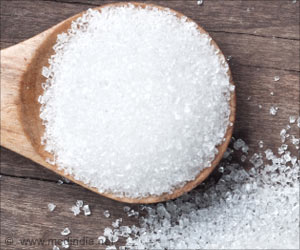
‘microRNA (miR-155) could be a biomarker for hypertension and also a therapeutic target for age-related hypertension.
’
Tweet it Now
Mice that lack mineralocorticoid receptors in smooth muscle cells, which regulate blood pressure, are protected from developing high blood pressure as they age. Jaffe and colleagues determined that compared to aged wild-type mice, aged animals lacking mineralocorticoid receptors have elevated levels of miR-155, less oxidative stress, and fewer hypertensive characteristics.
Moreover, restoration of miR-155 in aged wild-type mice improved blood pressure parameters. Importantly, in a small cohort of healthy older adults treated with a mineralocorticoid receptor inhibitor, reduced levels of miR-155 were associated with beneficial changes in blood pressure.
Together, these results indicate that miR-155 should be further explored as a biomarker and therapeutic target for age-related hypertension.
Source-Eurekalert















